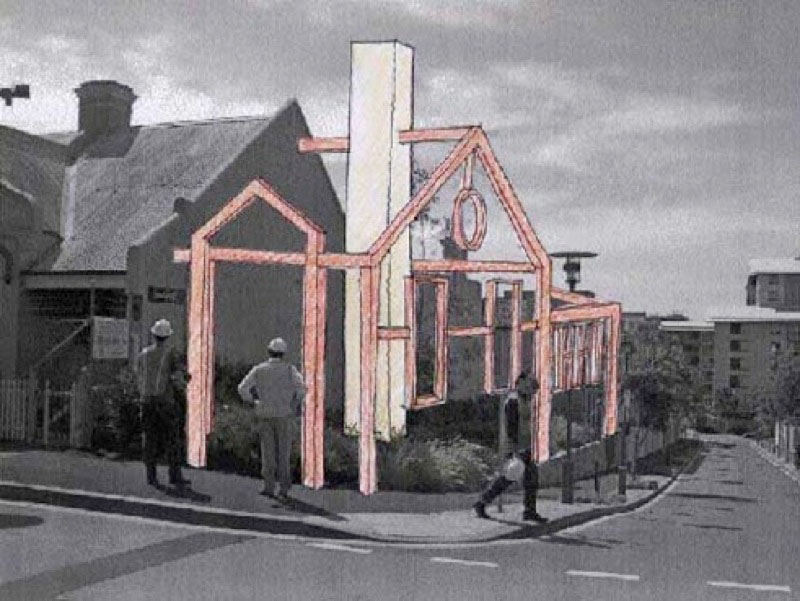John Street
Mainly residential since mid-nineteenth century. School built 1891-2.
John Street
1990
In 1984, as industries quit Pyrmont, the State government resolved to redevelop the area, and in 1987 decided that the peninsula needed its own plan. In the same year CSR asked Lend Lease to study the feasibility of redeveloping the whole industrial site. Many studies ensued: the Pyrmont-Ultimo Heritage Study (1990), a Social Impact Assessment (1991), and a Regional Environmental Plan (1992). In 1993 the Pyrmont-Ultimo Urban Development Plan was approved, and so was a Master Plan for Pyrmont Bay.
As historical sources the most useful studies were archaeological surveys, summed up in the Sydney Harbour Foreshore Authority’s Jacksons Landing Interpretation Strategy, and Jane Bennett¹s extraordinary series of paintings. A few years later John Broadbent complemented these studies with his comprehensive history of the ecology of the peninsula.
Pyrmont residents were deeply divided: some were forced to leave the area, others welcomed development, but in 1979 opponents formed UPROAR (Ultimo Pyrmont Residents Opposed to Arbitrary Redevelopment) and endured years of being consulted (or, in their view, coerced). In August 1992 a few activists proclaimed the Republic of Pyrmont. In this brilliant but ultimately vain gesture the republicans issued visas, and publicised their critique of top-down planning, and in particular to Jacksons Landing, and the proposed casino and helipad.
Meanwhile in 1997 Lend Lease bought the CSR site, and by April 1999 Jacksons Landing was under construction. In John Street, only one pub survived, and there was very little community to animate the Public School, which had been a Community Centre since the 1980s.
As most of John Street’s houses were owned by CSR, Lend Lease could replace most of them with new apartments and tennis courts. All but one of the cottages on the northern side between Jones Street and Cadigal Avenue were preserved, and most have been renovated and refurbished.
One was beyond repair. Plans were hatched to recreate it as a ‘Ghost House’ – a museum of old Pyrmont’s social life.








